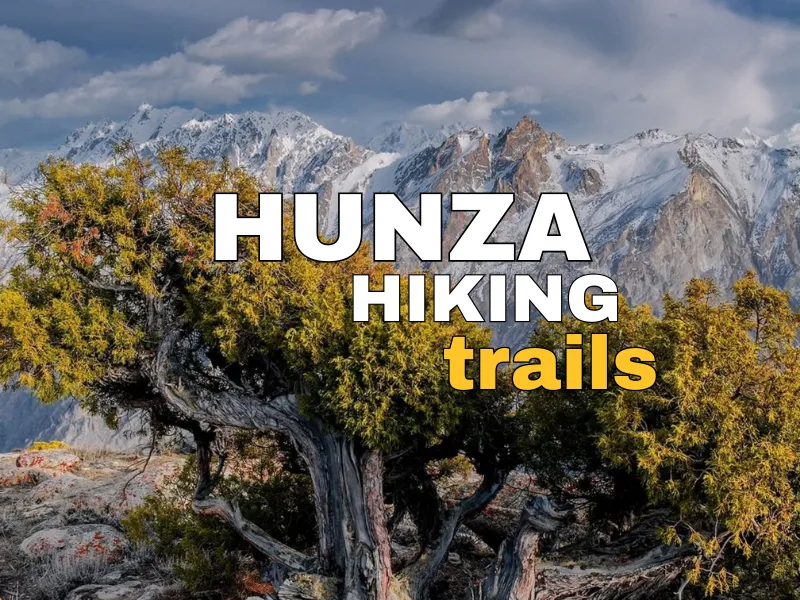Hunza Valley is a dream destination for hikers, offering everything from gentle village walks to challenging glacier treks surrounded by some of the highest peaks on Earth.
Whether you’re a casual traveler looking for day hikes in Hunza or an experienced trekker ready to tackle multi-day expeditions, the valley’s network of trails delivers unmatched diversity.
From the legendary Attabad Lake to the icy expanse of the Passu Glacier hike, each route offers its own mix of breathtaking landscapes, cultural encounters, and raw adventure.
In this guide, you’ll find the best hiking trails in Hunza Valley, practical tips, and safety advice gathered from both local guides and seasoned hikers.
Why Hunza is the Perfect Hiking Destination?
Hunza is located in northern Gilgit-Baltistan, Pakistan. It lies along the legendary Karakoram Highway, surrounded by some of the tallest and most photogenic mountains on Earth, including:
- Rakaposhi – 7,788 m (25,551 ft)
- Ultar Sar – 7,388 m (24,239 ft)
- Ladyfinger Peak – 6,000 m+ (19,685 ft)
- Passu Cones – iconic jagged peaks of the upper Hunza region
The valley itself sits at an average altitude of around 2,500 m (8,200 ft), while its hiking trails range from gentle riverside paths at 2,000 m to high meadows and glacier camps above 4,000 m. Beautiful lakes, lush orchards, ancient stone villages, vast glaciers, and alpine meadows are often just a day’s walk apart.
These trails vary from easy scenic walks between villages to challenging glacier crossings and multi-day high-altitude treks, meaning there’s something for every fitness level.
Best seasons for hiking in Hunza:
- March–May – Spring blossoms and mild weather; perfect for low- to mid-altitude hikes.
- June–September – Warm days, clear skies, and stable conditions on high-altitude trails.
- October – Crisp air, golden autumn foliage, and quieter trails after peak summer crowds.
List of Top 10 Best Hiking Trails in Hunza Valley
Hunza’s hiking scene offers something for everyone, from gentle ridge walks to challenging glacier crossings.
Below, you’ll find ten of the most rewarding hiking trails in Hunza, complete with distances, starting points, highlights, and local tips to make your adventure safer and more memorable.
1. Baskochi Meadows (Above Attabad Lake)
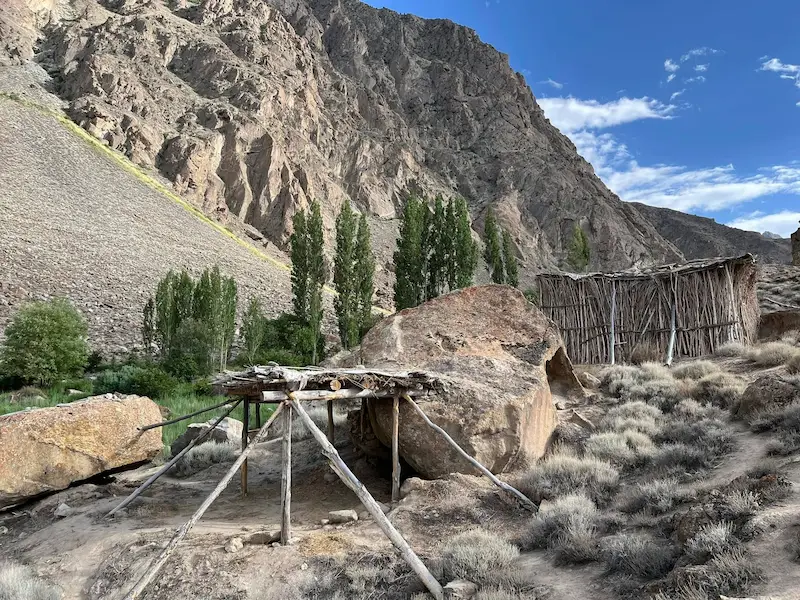
Located high above the turquoise waters of Attabad Lake, this trail offers an easy climb to a meadow with jaw-dropping views. It’s a favorite among photographers for its peaceful setting and dramatic mountain backdrop.
- Time & Distance: ~1.5–2 hours round trip; approx. 3–4 km
- Trailhead: Shishkat village or Attabad Lake parking area
- Highlights:
- Sweeping views of Attabad Lake framed by jagged peaks
- Perfect for both sunrise (golden peaks) and sunset (deep blue waters)
- Spring and summer bring lush wildflowers to the meadows
- Tips: Gradual climb but loose gravel on descent — wear sturdy shoes.
2. Hussaini Suspension Bridge to Passu Glacier View
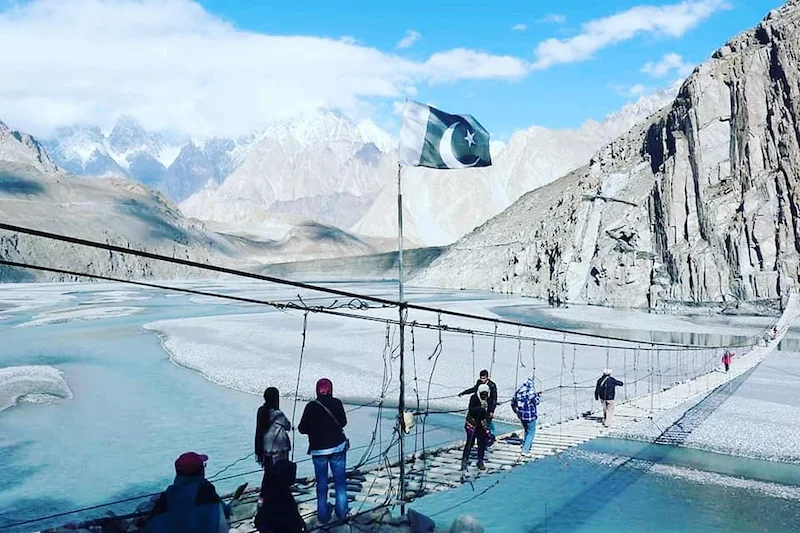
This route blends adrenaline and scenery, starting with one of the world’s most famous suspension bridges. After the crossing, the trail winds toward a relaxing café lookout with glacier views.
- Time & Distance: ~2–3 hours round trip; approx. 4–5 km
- Trailhead: Hussaini village, beside the suspension bridge
- Highlights:
- Thrilling bridge crossing with panoramic views of the Hunza River
- Gentle hike to a café viewpoint over Passu Glacier
- A unique mix of cultural charm and natural beauty
- Tips:
- The planks are widely spaced — avoid if you have severe vertigo
- Jeep track available for those skipping the bridge
3. Duiker (Eagle’s Nest) Panoramic Ridge Walk
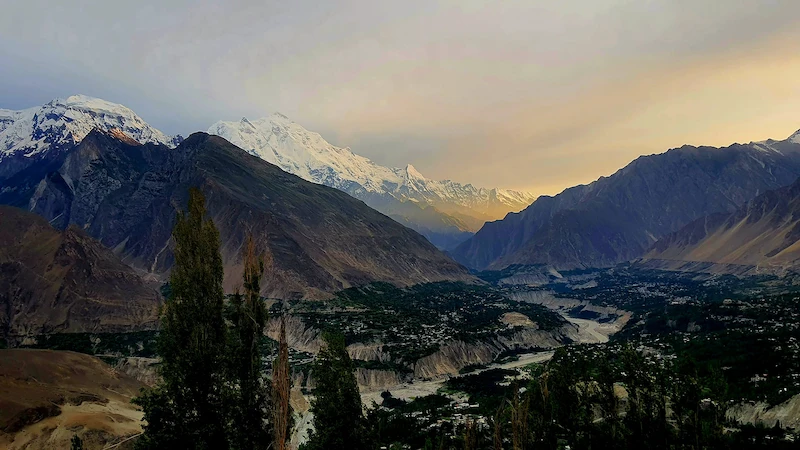
This gentle ridge walk is all about big views with little effort. Perfect for families, it lets you soak in iconic Hunza scenery without breaking too much of a sweat.
- Time & Distance: 1–2 hours depending on stops; ~3 km loop possible
- Trailhead: Duiker village near Eagle’s Nest Hotel
- Highlights:
- 360° views over Rakaposhi, Ultar Sar, and the Hunza Valley
- Famous for sunrise and sunset panoramas
- Easy ridge paths ideal for casual walkers
- Tips: Visit in October for stunning golden autumn colors. You can book hunza autumn trip with us and explore autumn colors of hunza.
4. Gulmit–Ghulkin “Black Glacier” Trail
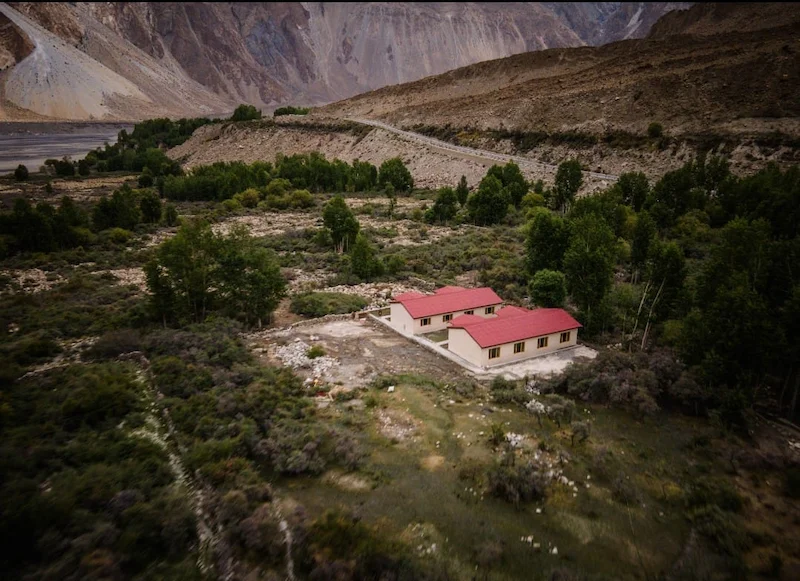
This trail delivers a fascinating mix of geology and scenery, taking you across a dark, rocky glacier moraine that feels almost otherworldly.
- Time & Distance: 3–4 hours round trip; ~6–7 km
- Trailhead: Gulmit village, behind the polo ground
- Highlights:
- Unique walk over the Black Glacier’s rocky surface
- Striking contrast between lush valley fields and glacier debris
- Fantastic photo ops at every turn
- Tips: Avoid midday summer heat; rocks can be unstable.
5. Passu Glacier Trek (Via Borith Lake & Outdoor Café)
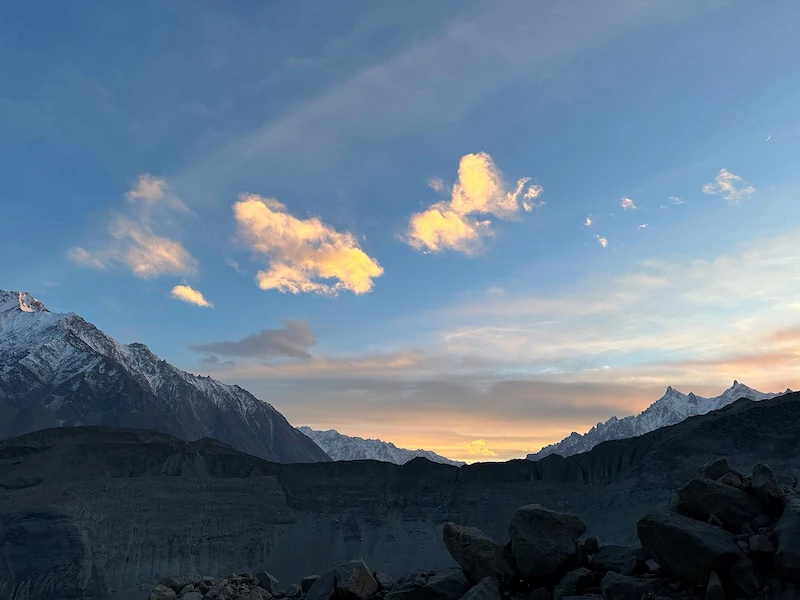
Combining lake views, high pastures, and glacier panoramas, this trek is a three-in-one adventure. The route is varied and visually stunning from start to finish.
- Time & Distance: 5–6 hours round trip; ~8–9 km
- Trailhead: Borith Lake (accessible by jeep from Gulmit)
- Highlights:
- Start at tranquil Borith Lake and end at dramatic glacier viewpoints
- Pass through yak pastures and alpine scenery
- Enjoy a break at the Outdoor Café with front-row glacier views
- Tips: Loose moraine sections — trekking poles help with stability.
6. Hon Pass Lookout / Ultar Canyon Water Channel Trail
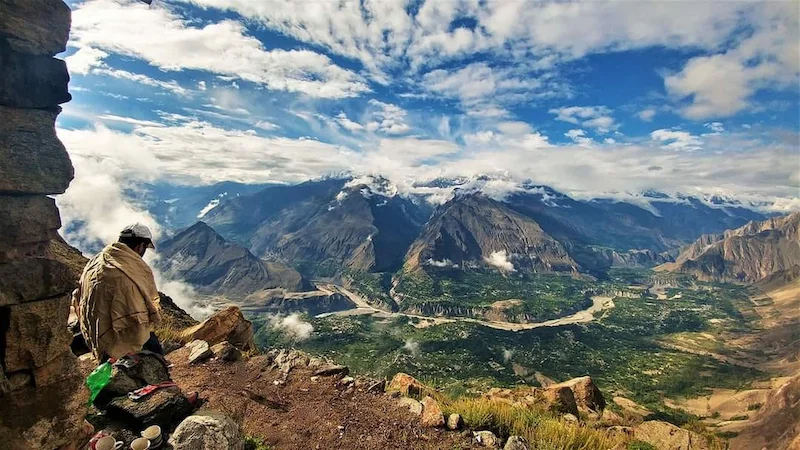
For experienced hikers craving a challenge, this steep and exposed climb rewards you with raw, close-up views of towering peaks.
- Time & Distance: Full-day hike; ~6–8 hours; ~1,000 m ascent
- Trailhead: Karimabad, near Baltit Fort
- Highlights:
- Follow an ancient irrigation channel through Ultar Canyon
- Jaw-dropping views of Ladyfinger Peak and Ultar Sar
- A peaceful trail rarely crowded
- Tips: Steep and potentially hazardous after rain; hire a guide.
7. Hoper Valley (Nagar) Glacier View Walk
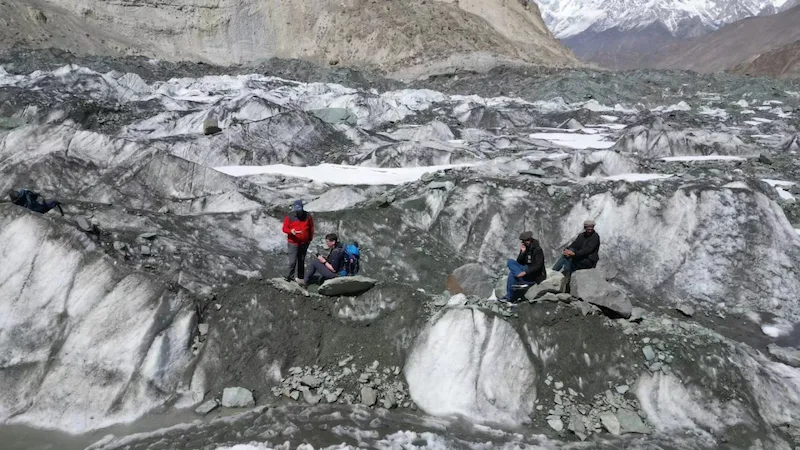
An easy yet awe-inspiring walk, this trail is perfect for those wanting a close look at glacier scenery without technical trekking.
- Time & Distance: 1–2 hours gentle walking
- Trailhead: Hoper village, Nagar Valley (short drive from Hunza)
- Highlights:
- Views of Hoper Glacier with Spantik and Diran Peaks towering behind
- Family-friendly path from the village
- Tips: Jeep transport recommended from Hunza; avoid walking onto the ice without a guide.
8. Ultar Meadows Camp (Below Ultar Sar)
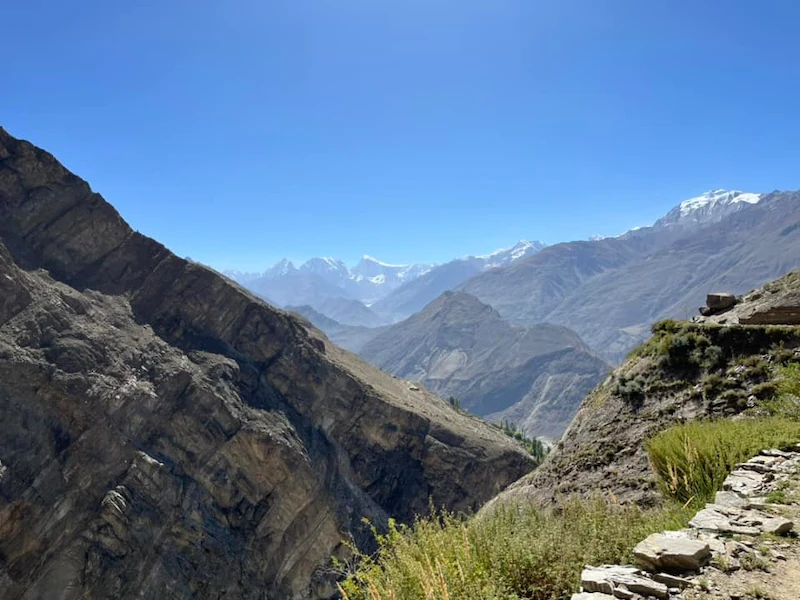
For hikers seeking solitude, this challenging trail leads to wildflower-filled meadows beneath some of Hunza’s most dramatic peaks.
- Time & Distance: 6–8 hours round trip or overnight; ~12 km
- Trailhead: Karimabad, near Baltit Fort
- Highlights:
- Close-up views of Ultar Sar and Ladyfinger Peak
- Summer blooms and pristine alpine scenery
- Tips: Steep and demanding; start early or plan to camp overnight.
9. Patundas Meadow (Via Passu Glacier) – 3 Days
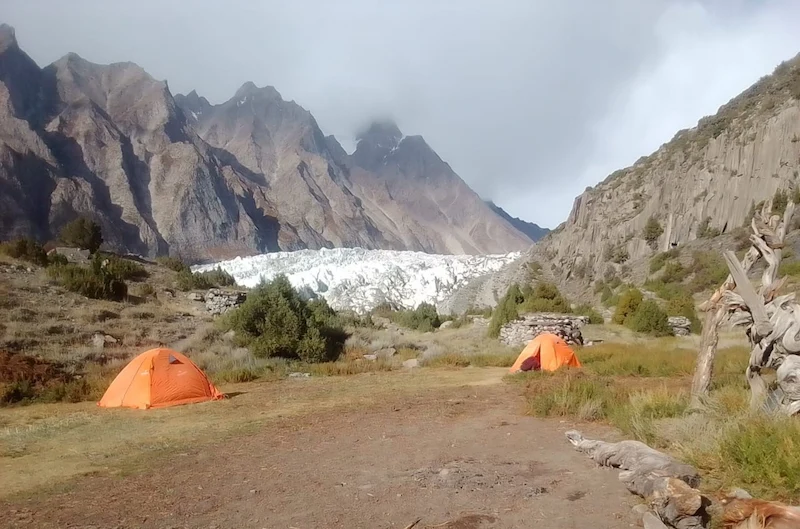
If there’s a trek that sums up the grandeur of Hunza, it’s Patundas — a high alpine meadow with panoramic glacier and peak views that will stay with you for life.
- Time & Distance: ~3 days; ~25–30 km total
- Trailhead: Passu village or Borith Lake
- Highlights:
- Cross Passu Glacier to reach a vast meadow at 4,300 m
- Breathtaking views of Batura Glacier and Passu Cones
- Epic night skies for stargazing
- Tips: Always take an experienced guide for glacier crossings; nights are very cold.
10. Rakaposhi Base Camp (From Minapin) – 2 to 3 Days

One of Pakistan’s most accessible big-mountain treks, this route offers front-row seats to the 7,788 m giant Rakaposhi.
- Time & Distance: 2–3 days; ~18–20 km total; ~1,300 m gain
- Trailhead: Minapin village (Nagar Valley)
- Highlights:
- Direct view of Rakaposhi’s immense ice wall
- Overnight stays at Tagaphari or base camp meadows
- Well-marked and relatively beginner-friendly
- Tips: Popular in summer; midweek trips are quieter.
Safety & Seasonality for Hiking in Hunza
Hiking in Hunza is as breathtaking as it is unpredictable. The valley’s beauty can turn challenging if you’re unprepared for altitude, changing weather, or rugged terrain. Here’s what to know before you lace up your boots.
Altitude & Acclimatization
While many valley walks in Hunza sit comfortably below 3,000 m, some of its iconic treks push much higher:
- Patundas Meadow: ~4,300 m
- Ultar Meadows: ~3,300 m
At these heights, oxygen levels drop, and altitude sickness can affect even fit hikers.
Expert Tips:
- Spend at least 2–3 nights in Hunza (2,500 m) before attempting higher routes.
- Ascend gradually — “climb high, sleep low” is a good mantra.
- Recognize symptoms: headache, nausea, dizziness. Descend if they worsen.
Trail Conditions
Hunza’s paths range from manicured village trails to raw, high-mountain scrambles. Be aware of specific hazards:
- Ultar Canyon: Steep, exposed, and prone to washed-out sections after rain or spring melt.
- Black & Passu Glaciers: Moraine slopes can be unstable, with loose rock shifting underfoot — trekking poles help.
- Seasonal landslides or rockfall may temporarily close trails; check with locals before setting out.
Bridges & Crossings
The region’s wooden-plank suspension bridges are both legendary and intimidating.
- Hussaini Suspension Bridge: Widely spaced planks, uneven handrails, and a significant sway in windy weather.
- Avoid if you have severe vertigo, poor balance, or during strong winds.
- Alternatives: Many destinations reached via Hussaini Bridge also have jeep-accessible routes from the Karakoram Highway.
When to Hire a Guide?
In Hunza, guides are not just route-finders, they’re safety multipliers.
Strongly recommended for:
- Glacier crossings (Passu, Batura, Black Glacier)
- Off-trail meadows like Patundas, Hon Pass, and Ultar
- Shoulder seasons (March–April, late October–November) when snow or ice may linger
What to Pack for Hunza Hikes (Season-Specific)
Hunza’s trails can take you from warm, sunny orchards to windswept glacier viewpoints in a single day. The right gear keeps you safe, comfortable, and ready for sudden changes in weather. Here’s what seasoned hikers and local guides recommend.
Clothing: Layer Smartly
Hunza’s weather changes fast — cold mornings, hot midday sun.
- Base: Breathable, moisture-wicking shirt
- Mid: Fleece or light insulated jacket
- Outer: Windproof & waterproof shell
- Extras: Gloves and warm hat for ridge winds
Footwear: Trail & Glacier Ready
- Village/meadow hikes: Sturdy, broken-in hiking shoes or mid-cut boots
- Glacier/moraine: Waterproof boots with stiff soles
- Tip: Avoid new boots — blisters are a nightmare at altitude
Trekking Poles
Essential for unstable moraine and swaying bridges; reduce knee strain and improve balance. Adjustable poles are best.
Sun & Hydration
- Sun protection: High-SPF sunscreen, sunglasses, wide-brim hat
- Hydration: 2–3 liters per day; use filter or purification tablets
- Bonus: Electrolyte packets for hot hikes
Responsible Hiking & Local Etiquette Tips
Hunza is not only a hiker’s paradise but also a living landscape, with villages, crop terraces, and grazing pastures intertwined with the trails.
Respecting local customs and the environment ensures both your safety and the preservation of this fragile ecosystem.
- Herders’ rights & grazing lands: Stay clear of livestock paths and always give way to animals; herders rely on these routes daily.
- Crop terraces: Do not step on or damage terrace walls; even a small misstep can destroy months of work.
- Trash-carry policy: Pack out everything you bring. There are no formal waste collection points on high-altitude trails.
- Dress norms: Modest clothing is appreciated in villages; avoid revealing attire when passing through settlements.
- Photography consent: Ask permission before photographing villagers, their homes, or livestock.
- Irrigation channels: Many trails run alongside open water channels; walking on them is dangerous and can destroy fragile infrastructure used for irrigation.
Being mindful of these practices enhances your experience and fosters good relationships with local communities.
Frequently Asked Questions (FAQs)
What are the best day hikes Hunza for beginners?
Easy and scenic options include Baskochi Meadows, Duiker Ridge, and the short Black Glacier route. These trails offer panoramic views without technical challenges.
Is the Passu Glacier hike difficult and can I do it without a guide?
The full glacier trek has loose moraine, icy patches, and altitude changes. While segments (Borith Lake → Outdoor Café → viewpoints) can be done independently, hiring a guide is strongly recommended for safety.
Patundas vs. Rakaposhi Base Camp — which is better for 2–3 days?
Patundas: Higher altitude (~4,300 m), stunning meadow views, fewer crowds, requires glacier crossing.
Rakaposhi Base Camp: Lower elevation (~3,800 m), easier logistics, spectacular ice wall and sunset views. Choice depends on experience and acclimatization.
Are Ultar Meadows/Hon Pass safe?
Both trails are exposed and can be washed out after rain. Turn back if weather deteriorates, and hiring a guide is recommended for route-finding.
Best time of year for Hunza hiking and what about monsoon/heat?
March–May: Spring blossoms, mild temperatures
June–September: Stable trails, warm but not humid
October: Autumn colors, crisp and quiet
Monsoon rarely affects Hunza directly, but heat above 3,000 m can be intense midday.
Do I need permits for these trails?
Most Hunza trails do not require permits, but certain high-altitude or border-adjacent treks (e.g., near Passu/Minapin) may need local check-post clearance.
Can kids or seniors cross the Hussaini Bridge?
Children and seniors can attempt shorter village walks, but the suspension bridge is not recommended for those with vertigo or limited mobility. Alternative jeep-access routes are safer.
Are there guided day hikes I can book last-minute?
Local operators via Explore-Share.com and village hotels often offer flexible, last-minute day hikes with experienced guides.
What about cell coverage & emergencies on these routes?
Coverage is limited on high-altitude trails; maintain satellite communication for remote areas. Clinics are available in Aliabad and Karimabad, and local rescue often relies on community assistance.


